Have you ever mixed red and blue paint, expecting to find purple? Only to find you’ve made the loveliest shade of mud? That’s because that primary color thing we learned long ago isn’t the best way to mix colors. Once you learn these rules of how to mix resin colors, you can create any resin color you want for a project.
Lack of good information has made mixing colors difficult in the past. Before the invention of color photography, color mixing was not very well understood. Many believed that red, yellow, and blue were the primary colors, from which you could make all others. Now, we know that magenta, yellow, and cyan are the true primaries and give much better results.
Steps on How to Mix Colors
Method 1: Basic
Check your paint colors. Magenta, yellow, and cyan are the colors to start with.
Find the color you want and follow the instructions below it. Each color chip represents a whole range of possibilities. You can adjust the amounts of paint you use to get the exact color you’re looking for. For example, you can make any color lighter or darker by adding more or less white. Complements are opposite colors on an accurate RGB/CMYK color wheel.
Magenta: You can’t mix magenta with other colors. You’ll have to buy it.
Light Magenta: Add white to magenta.
Dark Magenta: Add a small amount of black or green to magenta. Green is magenta’s complement.
Dull Magenta: Add both white and black (or green) to magenta.
Red: Add a small amount of yellow or orange to magenta.
Light Red (Salmon pink, coral): Add white to red. Less white and more red for coral.
Dark Red: Add a small amount of black or cyan to red. Cyan is red’s complement.
Dull Red: Add both white and black (or cyan) to red.
Orange: Mix yellow with magenta or red.
Light Orange (Peach): Add white to orange.
Dark Orange (Brown): Add a small amount of black or blue to orange. Or mix red and green. Blue is orange’s complement.
Dull Orange (Light Brown): Add both white and black (or blue) to orange.
Yellow: Yellow can’t be mixed with other colors. You will have to buy it.
Light Yellow: Add white to yellow.
Dark Yellow (Olive Green): Add a small amount of black or violet-blue to yellow. Violet-blue is yellow’s complement.
Dull Yellow (Light Olive): Add both white and black (or violet-blue) to yellow.
Lime Green: Add a small amount of green or cyan to yellow.
Light Lime: Add white to lime green.
Dark Lime: Add a small amount of black or purple to lime green. Purple is lime green’s complement.
Dull Lime: Add both white and black (or purple) to lime green.
Green: Mix cyan and yellow.
Light Green: Add white to green.
Dark Green: Add a small amount of black or magenta to green. Magenta is green’s complement.
Gray-Green: Add both white and black (or magenta) to green.
Teal Green: Mix cyan with a small amount of yellow or green.
Light Teal: Add white to teal green.
Dark Teal: Add a small amount of black (or magenta-red) to teal green. Magenta-red is teal green’s complement.
Gray-Teal: Add both white and black (or magenta-red) to teal green.
Cyan (turquoise blue): Cyan can’t be mixed with other colors. You will have to buy it.
Light Cyan: Add white to cyan.
Dark Cyan: Add a small amount of black or red to cyan. Red is cyan’s complement.
Gray-Cyan: Add both white and black (or red) to cyan.
Blue: Add a small amount of purple or magenta to cyan.
Light Blue: Add white to blue.
Dark Blue: Add a small amount of black or orange to blue. Orange is blue’s complement.
Gray-Blue: Add both white and black (or orange) to blue.
Violet-Blue: Mix magenta with cyan or blue.
Light Violet (Lavender): Add white to violet.
Dark Violet-Blue: Add a small amount of black or yellow to violet-blue. Yellow is violet’s complement.
Grayish Violet-Blue: Add both white and black (or yellow) to violet-blue.
Purple: Mix magenta with a small amount of cyan, blue, or violet.
Light Purple: Add white to purple.
Dark Purple: Add a small amount of black or lime green to purple. Lime green is purple’s complement.
Dull Purple: Add both white and black (or lime green) to purple.
Black: You can make black by mixing any two complements or any three colors spaced evenly around an accurate CMY/RGB color wheel, such as red, green, and blue. If you get a dark color instead of true black, correct it by adding the complement of that color.
White: White can’t be mixed. You will have to buy it.
Gray: Gray is black and white mixed together. See black, above.
Method 2: Advanced
Study the color you wish to make, analyzing it according to three dimensions: hue, saturation, and value.
Hue refers to a color’s position on the color wheel, red, orange, yellow, etc., plus all the intermediate colors such as red-orange and orange-yellow. Examples: Pink’s hue is magenta or red. Brown’s hue is orange because brown is dark orange.
Saturated colors are rich, bright colors, like those in the rainbow or on the color wheel. Pale colors (tints), dark colors (shades), and muted colors (tones) are less saturated.
Value refers to light versus dark. High-value colors are light (closer to white); low-value colors are dark (closer to black). For example, bright yellow is a light, high-value color. But you can increase its value more by adding white to make it pale yellow. Bright blue is naturally dark, a low-value color, but dark blue is even lower in value.
There are many ways to mix any given color, but here are some guidelines to help you.
Magenta, yellow, and cyan (turquoise blue) are the “subtractive” primary colors. This means you can combine them to make any other color, but cannot themselves be mixed from other colors.
Magenta and yellow mixed together make reds and oranges.
Yellow and cyan mixed together make greens.
Cyan and magenta mixed together make blues and purples.
Arrange your color wheel as a triangle, with magenta, yellow, and cyan in the three corners. Then to get bright colors, mix any of the colors on one side only of the triangle. For example, mix magenta with orange or yellow to make red. Or mix red with yellow to make orange. You can then mix orange with red to make orange-red. There’s no need to limit yourself to using only the primaries. For bright colors, mixing colors nearer to each other on the color wheel gives you better results.
If you mix colors from two different sides of the triangle, like blue and red, you won’t get a bright color. Instead, blue and red together make a dark purplish color.
For an unsaturated color like brown, you can adjust the hue the same way as you would for bright orange. Add small amounts of nearby colors on the color wheel: magenta, yellow, red, or orange. But since brown is not a bright color, you can also use colors from other sides of the triangle, like green or blue. The former will brighten your brown, as well as change the hue. The latter will darken it.
Low saturation colors (colors that aren’t bright) come in three basic varieties: tints (light colors), shades (dark colors), and tones (muted, dull colors).
Tints:
Any color can be lightened by adding white. For a very light color, it’s better to add your main color to the white a little at a time so you don’t waste supplies.
Shades:
You can darken any color by adding black. You can also add the color’s complement, which is its opposite color on an accurate CMY/RGB color wheel. For example, green will darken magenta and magenta will darken green. Add black or a complement a little at a time so you don’t overdo it.
Tones
By adding both white and black (or white and the color’s complement), you can make your color muted, grayish, or dull. By varying the relative amounts of black and white you add to your mix, you can obtain whatever value and saturation you’re looking for. Example: add both white and blue to orange to make light brown. Blue will darken orange, and white will lighten it. Different light browns can be mixed by controlling how much of each is added.
By adding both white and black (or white and the color’s complement), you can make your color muted, grayish, or dull. By varying the amounts of black and white you mix in, you can get the value and saturation you’re looking for. Example: add both white and blue to orange to make light brown. Blue will darken orange, and white will lighten it. You can make different light browns by controlling how much of each you add.
Make black by mixing any two complements. But you can also mix black with three or more colors evenly spaced around the color wheel. Make sure you don’t add any white or any color that has white in it. If what you want is gray, then go ahead and add white.
White can’t be mixed with other paints. Like the three primaries, magenta, yellow, and cyan, you will have to buy it.
Plan your strategy on how to mix colors.
Here is an example:
You may have a brown in your paintbox, but it’s not quite the brown you need. Think about the hue, value, and saturation of the color you have and of the color you want, and make the adjustments. For example, brown is dark orange. You can change the hue toward red or toward yellow (orange’s neighbors on the color wheel). Its value can be made lighter (whiter) or darker (more blue, which is orange’s complement, or more black). You can change the saturation toward color-rich (more orange) or toward color-poor (more black and white). Because brown is not a bright color (low saturation), you can add a small amount of any color to adjust. Colors from another side of the color triangle will darken it, while colors from the orange side of the triangle will brighten it.
Here’s another scenario:
You’ve mixed red and white to make pink, but your pink is too bright and too warm (yellowish). To correct the warm hue, you will have to add some magenta. To dull your bright pink, you will have to add either white, its complement (or black), or both. You need to decide whether you want a grayish pink (add the complement) or a lighter pink (add white). If you want to adjust the hue with magenta and dull your pink with green or cyan (complements of magenta and red), combine those steps by using a color that is between magenta and cyan, like blue.
Mix your colors, and get going on that masterpiece! If all this sounds overwhelming, you may just need some practice. Making yourself a color reference booklet can be a good way to practice using the principles of color theory.
More Tips About How to Mix Colors
When mixing paints, add small amounts to adjust a color. You can always add more. This is especially true for black and blue, which tend to be very dominant. Add a little at a time until you get the result you want.
You can use your eyes to find complementary colors. This is the old trick of staring at the color then looking at a white surface. You will see the opposite color appear due to the “color fatigue” of your eyes.
If you have trouble with the magenta, yellow, cyan paradigm, think of magenta as a certain kind of red, and cyan as a certain kind of blue. These are not the same red and blue which, together with green, are the additive primary colors for mixing light, as opposed to pigment, and which are used in technologies such as TV, computer monitors, and cameras. In fact, magenta, yellow, and cyan are the opposite colors of green, blue, and red respectively. Remember, “the proof is in the pudding,” and the correct primaries will be the ones that work best. Can you make bright magenta and cyan (turquoise blue) from yellow, blue, and red? No. Can you make bright blue and red from magenta, yellow, and cyan? Yes. You will only know if you actually try it.
Now you’re ready to use these techniques to color epoxy resin.
This article on how to mix colors is provided by wikiHow, a wiki how-to manual. Please edit this article and find author credits at the original wikiHow article. All content on wikiHow can be shared under a Creative Commons license.
Want to learn about creating with resin?
It’s why I wrote my resin beginner ebook. For less than the price of a resin kit, you’ll get the book that will take you from confused to confident with resin in only an afternoon. Buy PDF book now and get a download link to your email in minutes.


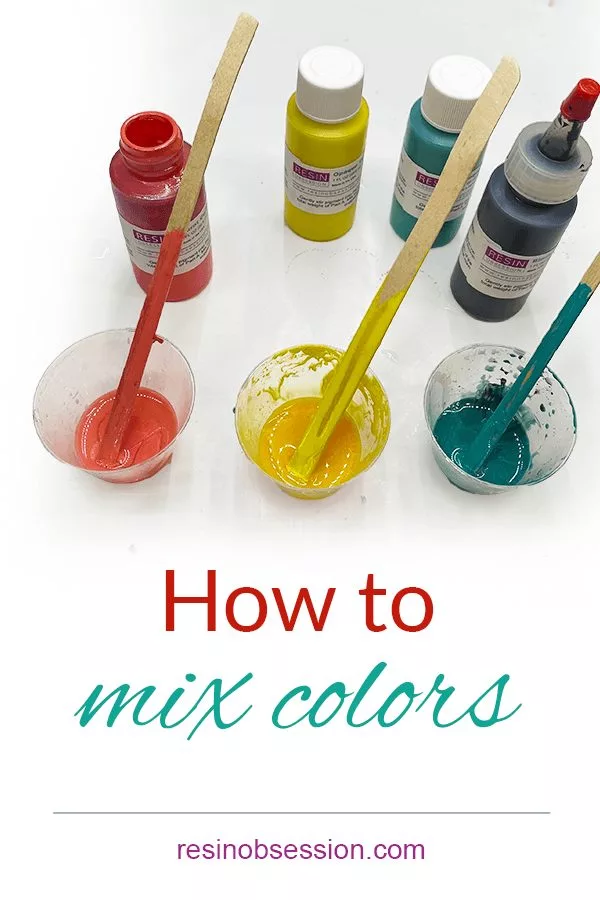
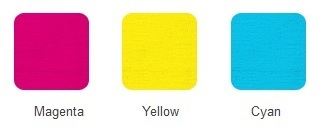
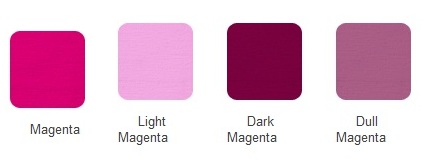



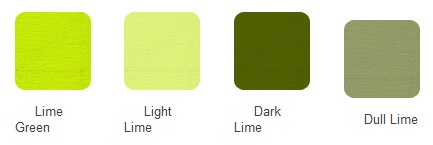




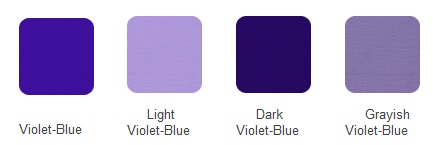
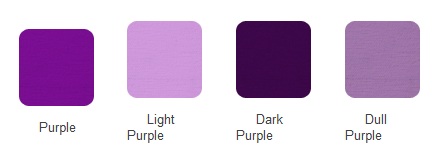
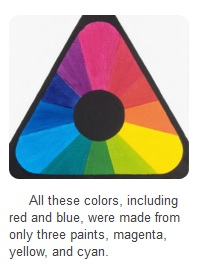
is there any way to subscribe to all the sections of this blog at once?
Like many people, I use an rss reader to subscribe to blogs. i recently found out that this one is still active but i can’t figure out where there is a single rss feed where I can subscribe to all the categories..
Kara,
We currently do not have one RSS feed or feedburner subscription for all categories. There is a box at the top of each category listing the feed and the option to receive posts by email.
Thank you for the suggestion and we will consider it as we improve our blog.
Your articles are for when it absolutely, positilvey, needs to be understood overnight.
Can I use glitter nail polish in resin? And can we use super fine glitter to mix in to the resin? I know you have shimmer pigments but to add more shimmer can we add glitter or should I add more shimmer pigment?
@Cory,
Yes, you can mix glitter into resin, but I wouldn’t suggest nail polish. Shimmer pigments (like Alumidust and Pearl Ex) also work well. As for which you should use, I would say it comes down to a personal preference. They give different looks!
I can mix beautiful colors in my resin but when I add metal to the mix, I can literally see the color drain totally away!!!
Does anyone know what on earth is happening? This happens everytime!
It can even happen without the metals, when I pop the item from the mold, the color is gone!
I’m totally baffled!
@Chris, I see your discussion in the forum.
This is the clearest article I have read thus far on color mixing using the CMYK system. Thank you!
You’re welcome! I’m so glad to hear you found it helpful.
Does anyone know what color you get if mix black.gray and pink
How would you go around if you wanted to make a green/teal coaster with orange accent with alcohol ink? I know those two colors would most likely mix and become brown… But it’s a really nice color association…
I AM ASKING YOU HOW TO MAKE BLUE WITHOUT BLUE
YOU CAN’T, BLUE IS A PRIMARY COLOUR. HOPE YOU BOUGHT BLUE SINCE THIS POST…